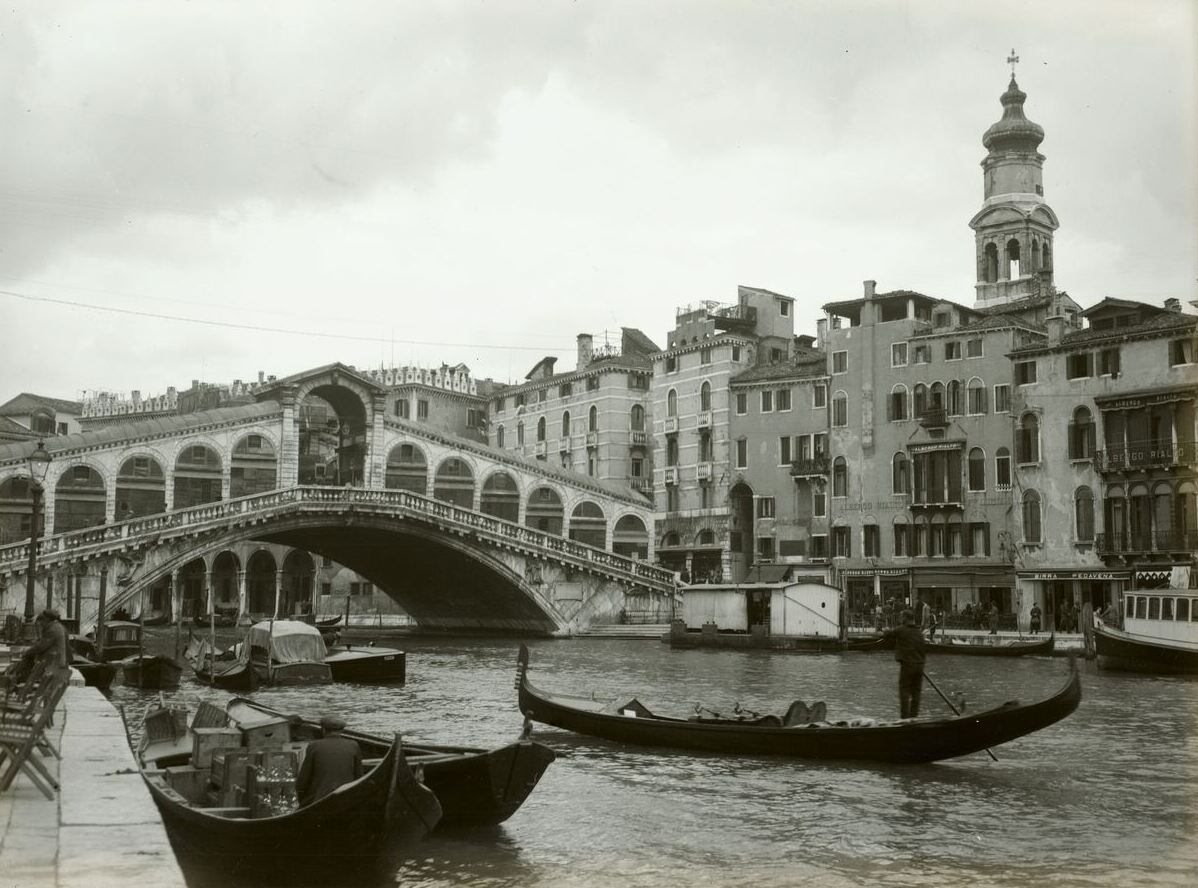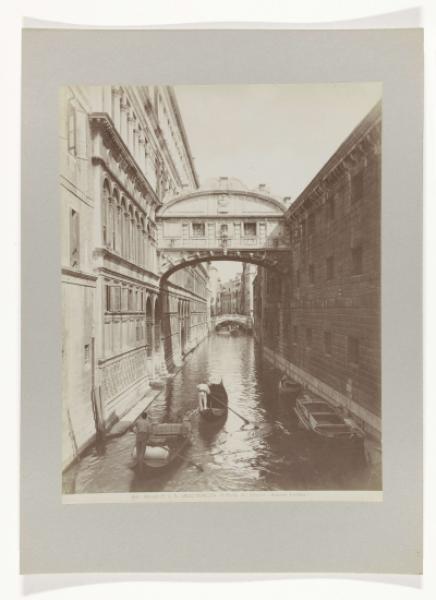Palaces rise sternly from the water and are so unbelievably white and fragile, as if they had been created from nothing but light and a little tenuous shadow. The sun, still low above the lagoons, lets its dazzling gold stream across the full width of the canal; a few shining white gulls shoot through on pointed wings; the rippling water trembles with the abundance of light and casts shy, bright reflections in the gates of the palaces and in the narrow, dimly blue side canals, where there is a mysterious silence of gondolas gliding under bridges. (Fabricius 1931: 44)
Now it’s up to you to guess which Italian city Fabricius is talking about – right, Venice. A magical city also known by the names of Pearl of the North, City of Bridges and La Serenissima (the serene one). Serenissimo used to be a title of honour reserved mainly for Il Doge, the leader of the Republic of Venice. Later, the term, in addition to being an honorary title, was also used to refer to the city of Venice. (De Rienzo 2005)
The description at the beginning of this blog also shows the calming character of Venice. The quote is from the book Venetiaansch avontuur (Venetian adventure) (1931) by author Johan Fabricius (1899-1981). The novel describes the adventures of the Austrian Walther, who has a good but boring job with a company that makes rubber collars. In addition, Walther writes articles and poetry with which he wants to change the world. In one of his articles he expresses his dissatisfaction with the injustice in the world (what exactly he is dissatisfied about is not clear) and as a result of this text, Walther is called to his boss’ office and sent on holiday. This is because expressions of dissatisfaction by an employee could damage the reputation of the company, something that Walther’s boss would prefer to avoid. From that moment on, Walther begins to doubt the ways in which he has thus far shaped his life. He consults his friends and tells them: ‘I have thought until now that I had to bear the suffering of a world, the responsibility for a world, – and I have come back from that opinion. I am young, I live only once; I have never realized what these two things mean.’ (24-25) When Walther elaborates on his holiday plans, it becomes clear that he doesn’t just want to go on holiday. On the contrary, he has a mission: he wants to hook up with a ‘dollar princess’ – sugarmommy. (27)

Finally, Walther leaves for the city of his dreams: Venice. Once he arrives, he starts chasing (read: stalking) several women and falls in love head over heels, after which he often decides after just one day that the girl isn’t the one after all. Walther’s hunt takes us past the most famous sights in Venice, such as the Rialto Bridge and the L’Academia museum. Walther, however, hardly notices the beauties the city has to offer. For him, there is nothing more important than finding a rich wife. And when things get tough, Walther panics. This happens, for example, at the beginning of his quest, when he tries to warn a blonde woman about an Italian man who is trying to win her heart with his southern charm:
Walther, whose face had just turned dark red with anger, suddenly turned very pale after her smile. He now knows that he has behaved like a jealous fool and only aroused her ridicule, nay, worse, her pity. […] To overcome his hysteria, he gets off at the next landing and begins a wild ramble through the maze of alleys, in which even Baedeker [a brand name of a famous travel guide] no longer shows the way. (60)
Ninety years ago, the travel guide could not show Walther the way through the alleys of Venice; today it is still not possible to find your way in the maze of streets – not even with the help of Google Maps. In my opinion, this is precisely the charm of Venice: it is wonderful to wander through the streets and alleys of the city, not knowing where you will end up, and to be able to get lost and discover beautiful squares that you would otherwise never have visited or found.
Walther encounters a different side of Venice during his wanderings, after his failed warning to the blonde woman:
He arrives in slums, where a stranger is still a more or less surprising appearance, shunned by cats and gawked at by children, slums so narrow that oblique mirrors on the window frames must reflect the light falling from above into the rooms. (60)
Although Venice doesn’t have slums like this anymore, there are still alleys where no tourists are to be found and you can experience the serenity of Venice. Walther experiences this too. He panics when his advances towards a woman do not succeed, but then finds peace through his wanderings in Venice. Thus, the city lives up to its nickname, La Serenissima.
Bibliography
Fabricius, Johan, Venetiaansch avontuur, ‘s-Gravenhage 1931.
De Rienzo, Giorgio, ‘Rubriche Scioglilingua’, in Corriere della Sera, 21 October 2005, https://www.corriere.it/Rubriche/Scioglilingua/2005/21ottobre.shtml, consulted on 17 December 2021.
